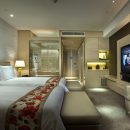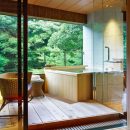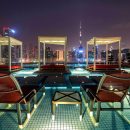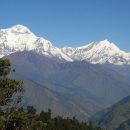Travel to Vietnam, Laos, Cambodia for an exotic and mysterious experience
The countries of Vietnam, Cambodia and Laos share spectacular sights, captivating natural beauty and a friendly, colorful culture. Lose yourself in the tranquil magic of Luang Prabang or amongst the gilded pavilions, lily ponds and terraced gardens of Imperial Hue, the intricate medieval artisan quarter of Hanoi or the incomparable temples of Angkor, being slowly and romantically reclaimed by the jungle. See it all on an exciting tour of the regions highlights, or simply submit to complete a relaxation at one of the luxurious resorts fringing the pristine white sands of the South China Sea coastline.
Hanoi:
Capital of Vietnam, center for economy, politics and Vietnamese culture, Hanoi is the second largest city in Vietnam and a must see for tourists. This city is a fascinating blend of East and West: nestled along wooded boulevards among the citys two dozen lakes, you will find architectural souvenirs left by all who conquered this great valley, the Chinese influence from centuries of dominance and French design from its colonial past. Largely unspoiled by modern architecture of the 1970s and 80s, Hanoi is now going through a modernization that is making it a rising star in Southeast Asia.
Imperial Hue:
Hue Citadel is Hue has chosen to be the capital city of the Southern Kingdom by all Lords Nguyen and officially became the capital under Tay Son Dynasty. For approximately 400 years, Hue has become a great landscape and architectural site. Situated on the Northern bank of the Perfume River, Hue royal complex has been officially recognized by the UNESCO as a World Heritage Site.
Angkor:
The most visited and famous temples of the Angkor archaeological park are of course Angkor Wat, Angkor Thom, Banteay Prei, Baphuon, Bayon and Ta Som. Hundred or so monuments still remain scattered over an area of about 300 square kilometers in northern Cambodia – the religious remains of a series of cities, built by a succession of kings from around the 7th to the 13th centuries.
All civic and domestic buildings were built in timber and have long since disappeared, so not much is known about the lives of the civilians – though some 1,200 inscriptions found throughout the region and the remains of a vast irrigation system indicate the scale and complexity of the civilization.
Luang Prabang:
Luang Prabang is the former capital of Laos and the center of culture and religion of Laotian people with monasteries, monuments, traditional costumes, old French houses and beautiful scenery. If time is limited, top priority should go to the old city, marked by UNESCO as a ‘historic preservation zone’. Wat Mai Suwannaphumaham is worth a visit, especially at dusk when you are likely to hear the murmuring chants of monks praying.











